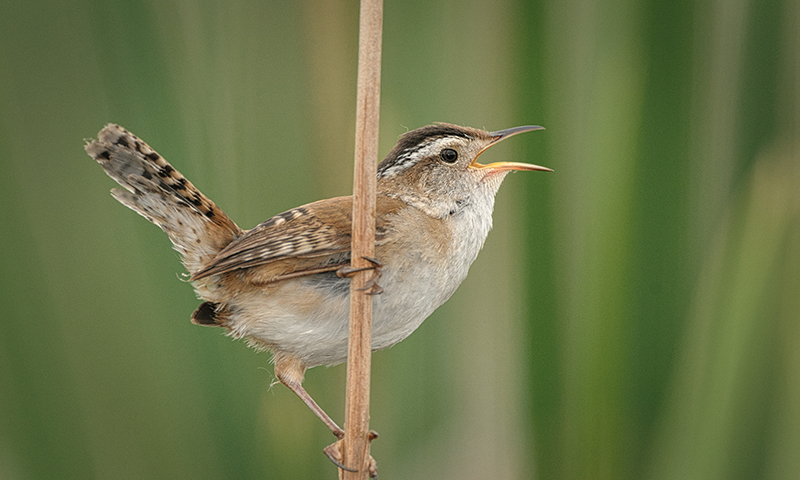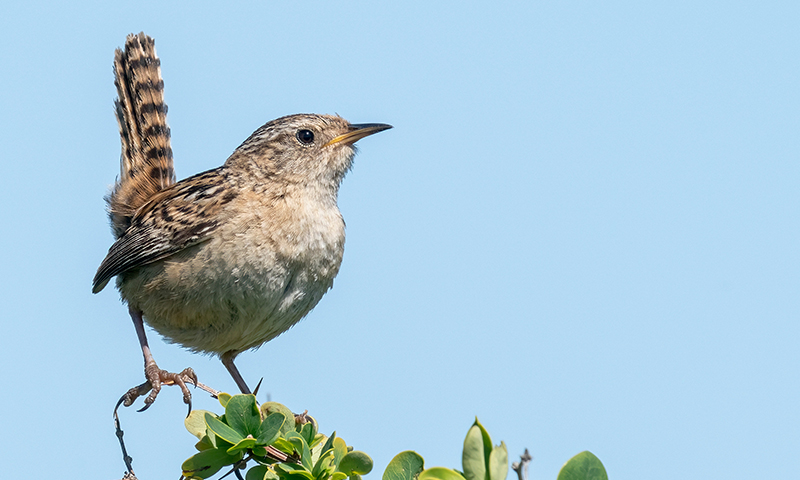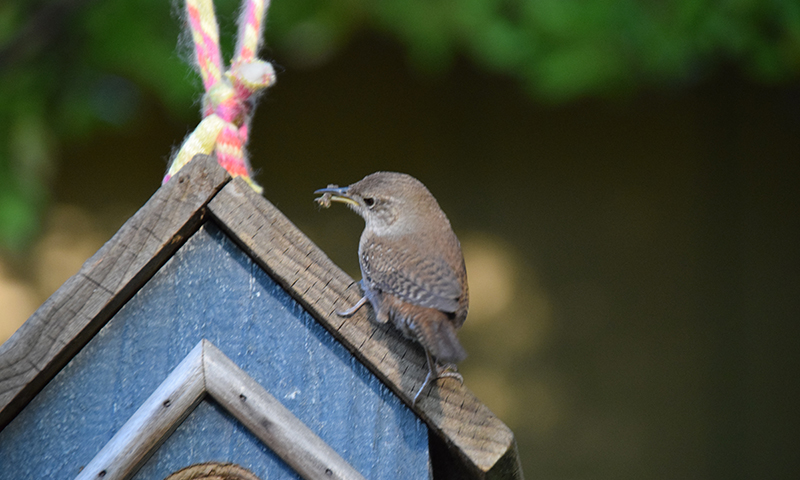All About Wrens and How to Attract Them
If you hear an ornate birdsong duet on a forest walk, it might just be a pair of wrens showing off their vocal skills. Males and females sing different parts of a song so well the melody is easily mistaken for one bird's creation.
Wrens are unique little wild friends with big voices that birders enjoy hearing in their backyards.
Today we're learning all about wrens from Jeffrey A. Stratford, PhD., chair of the Department of Biology and Earth System Sciences at Wilkes University in Pennsylvania. He researches biodiversity conservation and teaches various biology and ecology courses. Stratford is also an American Ornithological Society Fellow.

Marsh wren
How to Identify Wrens in the Wild
Experts have identified 96 different species of wrens. Stratford explains the number can shift as ornithologists decide if different populations are different species.
"There are several species of wrens, including Marsh wren and Sedge wren, that have experienced sharp declines in abundance. These species need large, undisturbed wetlands and coastal habitats. Most people may have never seen these very secretive birds," Stratford shared.
Nearly all wrens (both in species and gender) have a similar small size and brown feathers. Some have a barring pattern on the wings or belly. These petite birds are more round than long, with small wings and short, narrow tails. Wrens also have long legs and long toes.
But don't confuse wrens with sparrows. Wrens have long bills to capture insects. Wrens also have longer tails that often sit vertically as the bird hops along the ground looking for seeds. And take a closer look around your home. Wrens will often forage on eaves and under outdoor furniture in pursuit of spiders — their favorite protein.
You can also find a wren with your ears. These little birds vocalize often, rarely keeping quiet. If you're curious about what different wrens sound like, the Cornell University All About Birds Bird Guide offers audio clips from 11 varieties of wrens, including the Northern House wren and the Winter wren.
If you see a singing wren shaking its wings and dancing from side to side, you've likely spotted a charismatic male. These little songbirds belt out an amazing 500 to 600 notes per minute.

Sedge wren
Where to Find Wrens In Nature
Wrens live throughout North, Central, and — most dominantly — South America. But that's not all!
"There is also a species of wren that ranges from Ireland across Europe and out to eastern Asia," Stratford added.
You can find wrens in boreal forests, deciduous forests, rainforests, and deserts. However, each species has its own habitat requirements.
"For example, Winter wrens prefer dark-shaded ravines around small streams. House wrens and Carolina wrens are both tolerant of suburban landscapes if they have enough shrubs or areas of dense vegetation," Stratford explained.
And some wrens, well, they aren't very picky about where they spend their time.
"Carolina wrens will put their nests in any cavity. I had a friend that had a Carolina wren build a nest in a pocket in a pair of jeans that were hanging out to dry," Stratford commented. "I had a Carolina wren nest in the top pocket of a backpack that was stored in a shed."
And what about migration? Usually, tropical wrens stay in their home area year-round, while wrens in the northern ranges migrate to warmer climates during colder weather.

Northern house wren
How to Attract Wrens to Your Yard
If you want to see and hear these songbirds in your yard, plant small shrubs, add wildflowers, or build a brush pile from yard clippings. Why? Wrens love to dine on insects, ants, beetles, flies, and spiders that these yard features tend to attract.
In the winter when foliage dies down, wrens snack on dried holly berries and other winter fruits. You can also offer suet and dried mealworms. A few options to try include the Kaytee Wild Berry Suet and Kaytee Orange Harvest Suet Dough. You could also offer a sprinkle of Kaytee Mealworms on the Kaytee Cedar Bird Bath Or Feeder.
Wrens enjoy fruits more than seeds. If you want to offer a fresh snack from your kitchen, consider putting chopped berries (blueberries, strawberries, raspberries, etc.) in your bird feeder.
Finally, practice patience. Wrens don't sit still for long. Watch for them to flutter around in the undergrowth of shrubs and wildflowers, explore rocky crevices, or hop around in trees searching for insect snacks and nesting locations.

Sedge wren perched on a branch.
Expand Your Birding Repertoire with Wrens
As you grow your bird-watching hobby, consider attracting wrens to your home. You can easily do this by offering an environment they enjoy, such as flowering shrubs and a birdfeeder filled with mealworms and dried berries.
Then, listen! You'll likely hear wrens before you see these active little birds.
Shop Kaytee Wild Bird Supplies online for more backyard feeding ideas. Soon you'll have all your favorite feathered friends coming to visit you!
